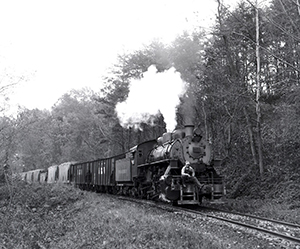
On November 27, 1961, VBR president Kenneth Cobb died at the age of 52. Immediately, there was much speculation about the continued use of steam on “Th’ Blue Ridge”. Kenneth’s younger brother, John Cobb assumed the presidency of the Virginia Blue Ridge Railway on February 1, 1962. At the time, the railroad’s new president was asked about the future of the VBR’s stable of steam locomotives and if the railroad would make a move to convert to diesel power. He said, “We plan to keep them. We have 20 years of good steam transportation in our shop.”
But those encouraging words would not ring true, for in April of 1963, the decision to end VBR steam operations was made when the railroad arranged to purchase two used SW1 600-horsepower diesel switching units from the Erie-Lackawanna Railroad (EL).; For many years, every used locomotive dealer in the country had been sending a steady barrage of sales letters to the VBR, and ultimately Birmingham Rail & Locomotive Company of Birmingham, Alabama succeeded in brokering the purchase of the Erie-Lackawanna locomotives to the VBR.
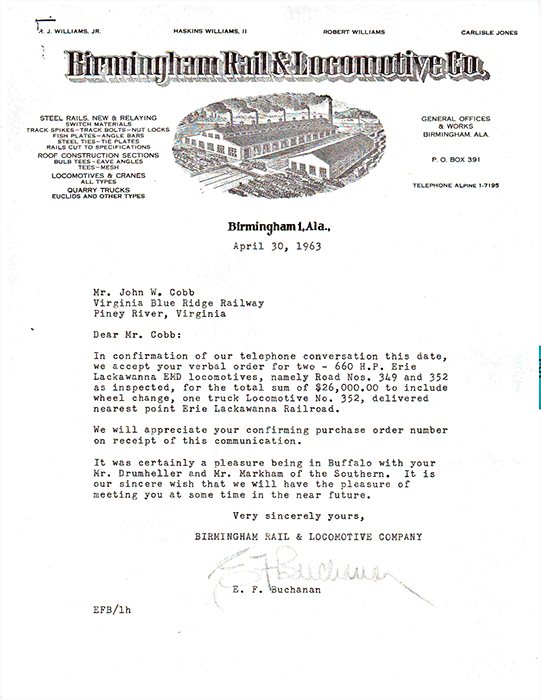
On August 1, 1963, engine No. 9 had the honor of being the very last steam locomotive to pull a revenue freight train over the Virginia Blue Ridge Railway. After that date, the steam engines were put up for sale and from that point on until the railroad was shut down in 1980, all trains would be powered by diesel locomotives.
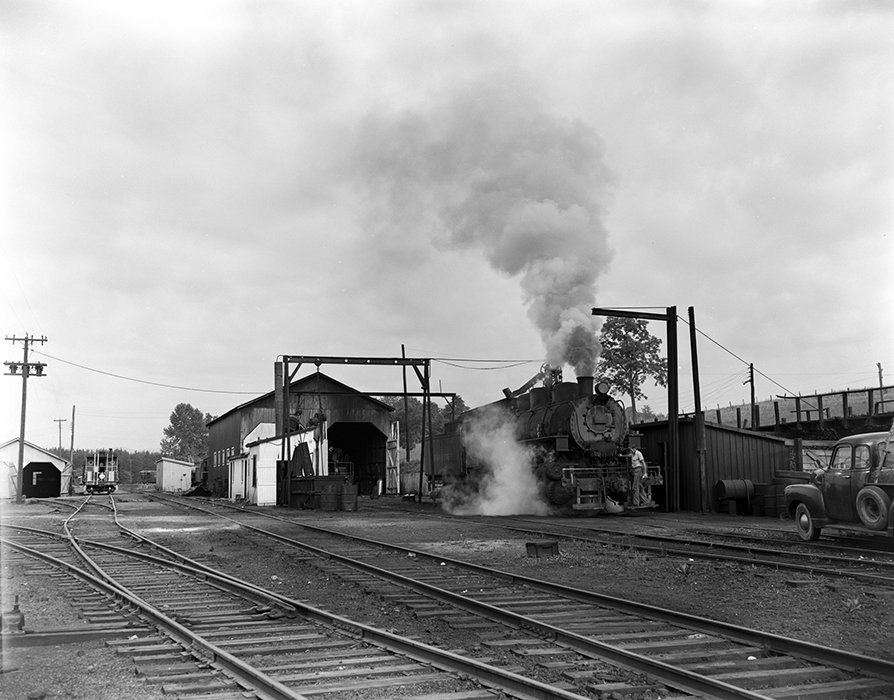
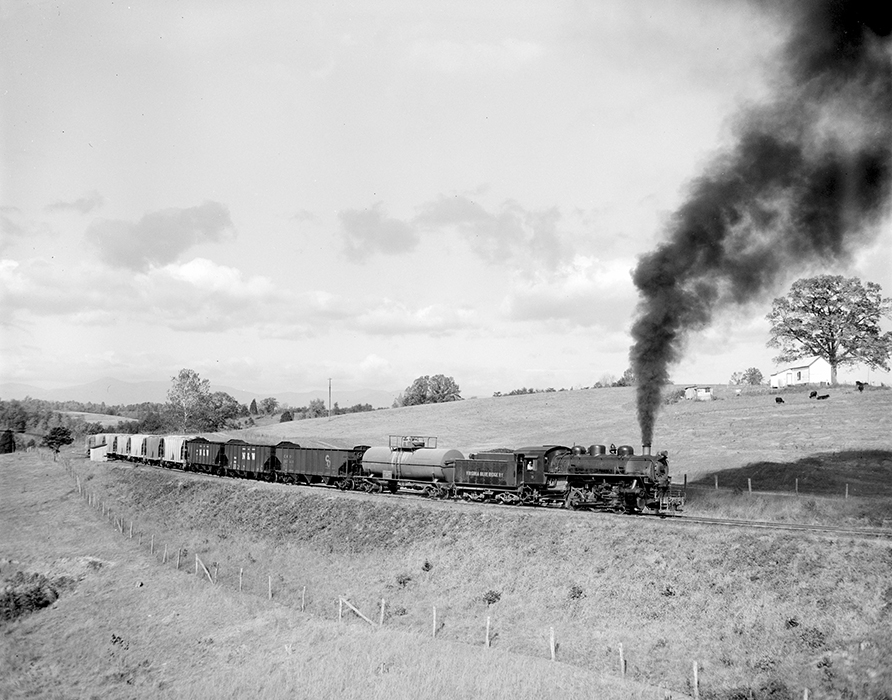
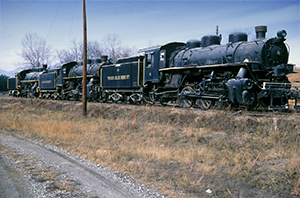
While steam was officially dead at Piney River, the VBR had taken note of the tourist railroad phenomenon and seriously considered getting into the business. Engine No. 8 had just been reflued around the time of dieselization and was held for a year or so with the thought of operating “steam excursions”. Two January 1964 letters of correspondence written by VBR President John Cobb survive, and give a hint of VBR’s thinking on future steam excursions: “”We are keeping our No. 8 (0-6-0) in the event we need a steamer for tourist passenger travel in the future…we are on the lookout for three old style wooden coaches…” and: “We will not fire up our number eight locomotive until the time we elect to run for the ferroequinologists on a commercial basis, probably in 1965.” That notion passed rather quickly and No. 8 was sold without ever having been steamed again in Virginia.
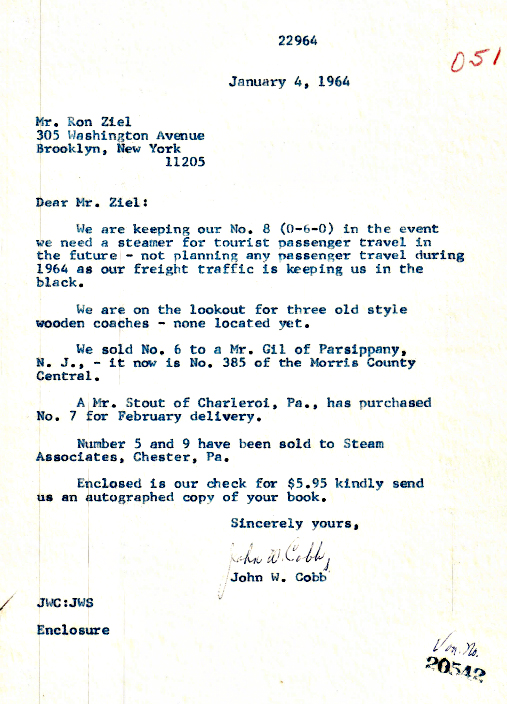
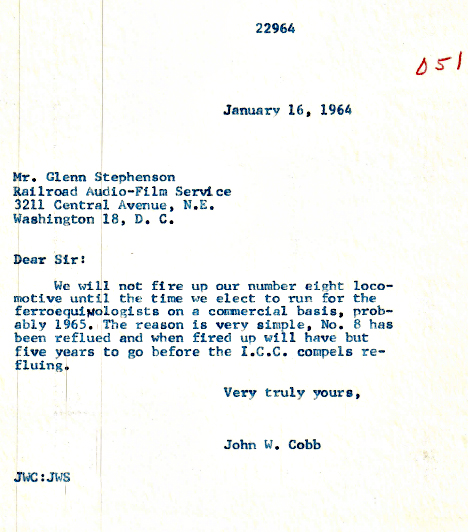
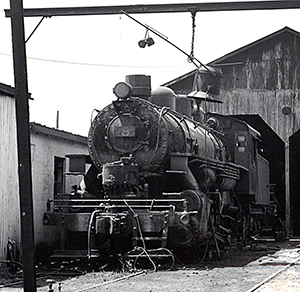
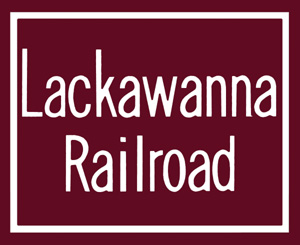
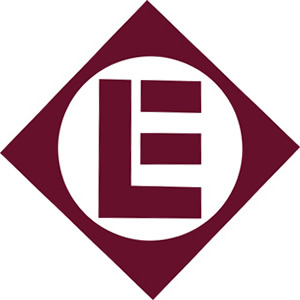
The diesels that came to the VBR were originally built by the Electro-Motive Division of General Motors in 1940 for the Delaware, Lackawanna & Western Railroad (DL&W). As fate would have it, they were actually older than the four 0-6-0 steam locomotives they were about to replace. When the Erie and DL&W railroads merged in 1960 to form the Erie-Lackawanna Railroad, all of the company’s combined locomotives were renumbered into the new EL numbering system.
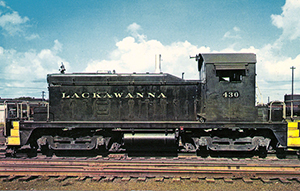
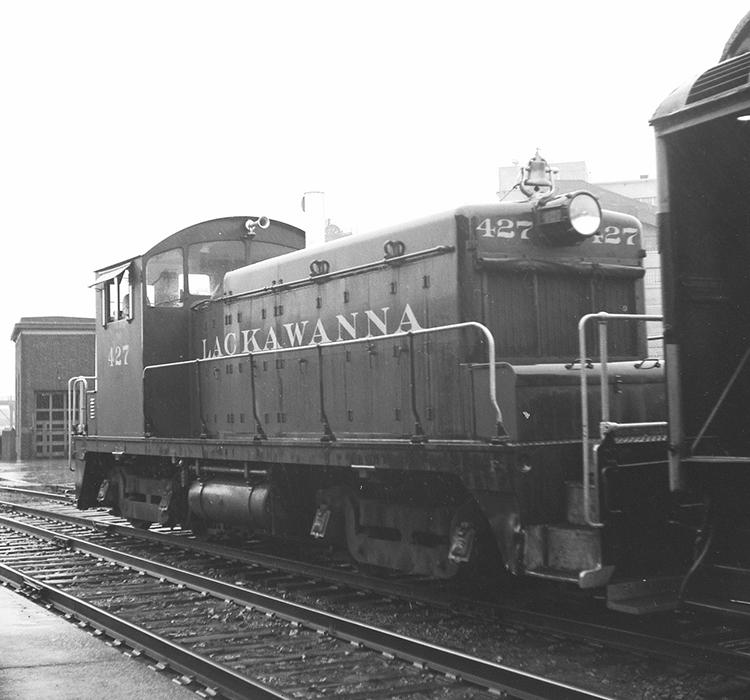
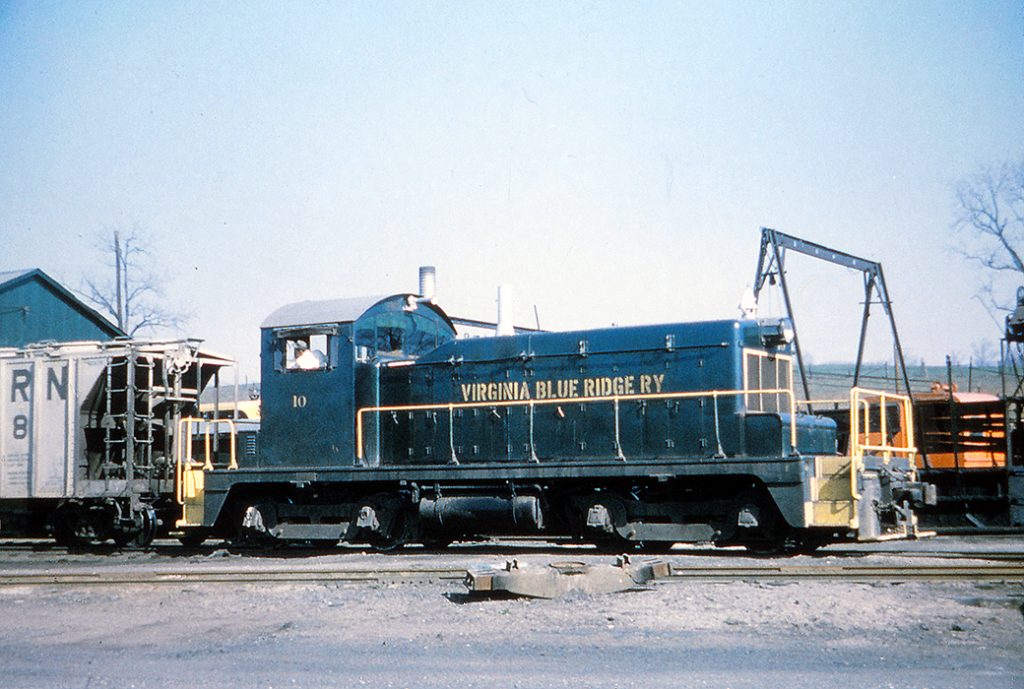
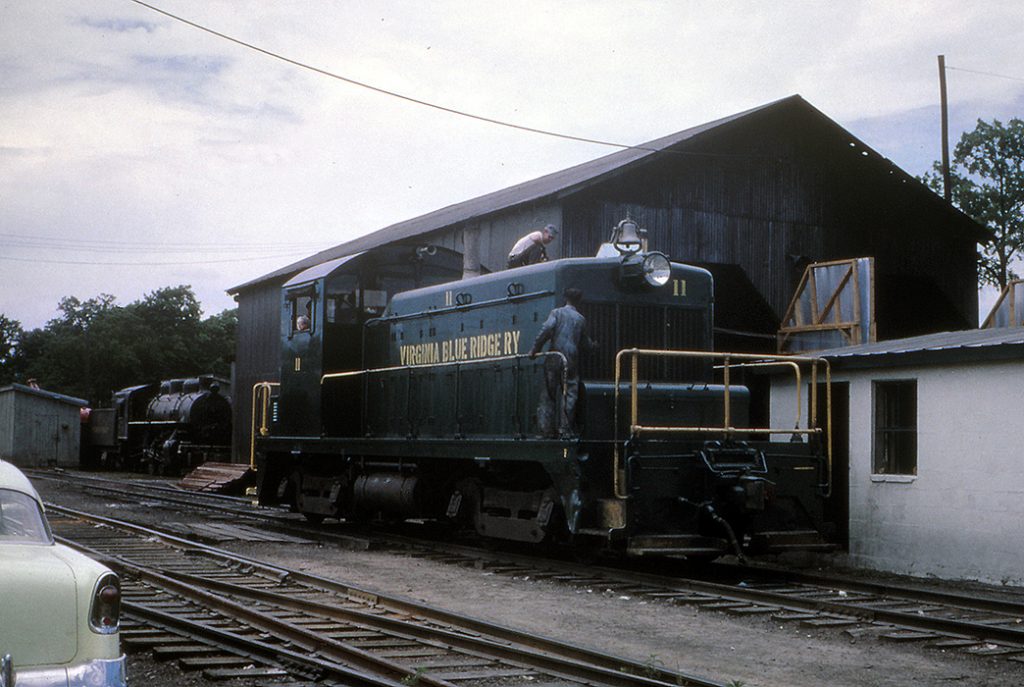
Steam engine No. 5 can be seen in the background
VBR’s new diesels arrived at Piney River on June 18, 1963, and were numbered in a continuation of the VBR’s steam numbering system. EL No. 352 (ex-DL&W 430) became VBR No. 10, while EL No. 349 (ex-DL&W 427) became VBR 11. The VBR painted their new locomotives in two different colors…No. 10 was given a dark green scheme, while No. 11 was painted gloss-black. Both engines had yellow numerals and letters, utilizing the same stencil pattern that had originally been applied to the steam locomotives.
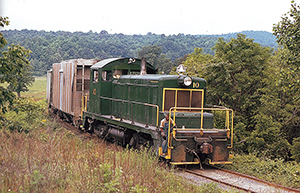
No. 10 was used extensively throughout the years, making daily trips out of Piney River to the American Cyanamid facility and the aplite plants. She would then pull her heavy load of cars east to the VBR’s scale house at Tye River for weighing and eventual interchange with the Southern Railway. After the VBR went out of business, No. 10 was sold in 1985 to the Union Tank Car Company (UTLX), repainted in a blue scheme and numbered “UTLX 12226”. She currently works the UTLX yard in Marion, Ohio.
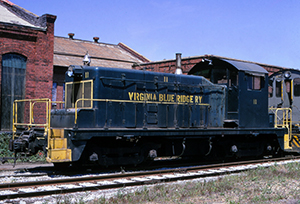
No. 11 unfortunately was never a reliable engine on the VBR and by 1973 she was being cannibalized for parts to keep Nos. 10 & 12 operating. In exchange for a rebuild of No. 12, No. 11 was sent to Railway Supply Company (RSC) in Birmingham, Alabama in 1974 as a trade-in. It was later sold to the Kaiser Chemical Company in Bainbridge, Georgia where it was used as the plant switcher for a number of years. As of 2006, it was reported to be in service at the Formosa Plastics facility in Baton Rouge, Louisiana.
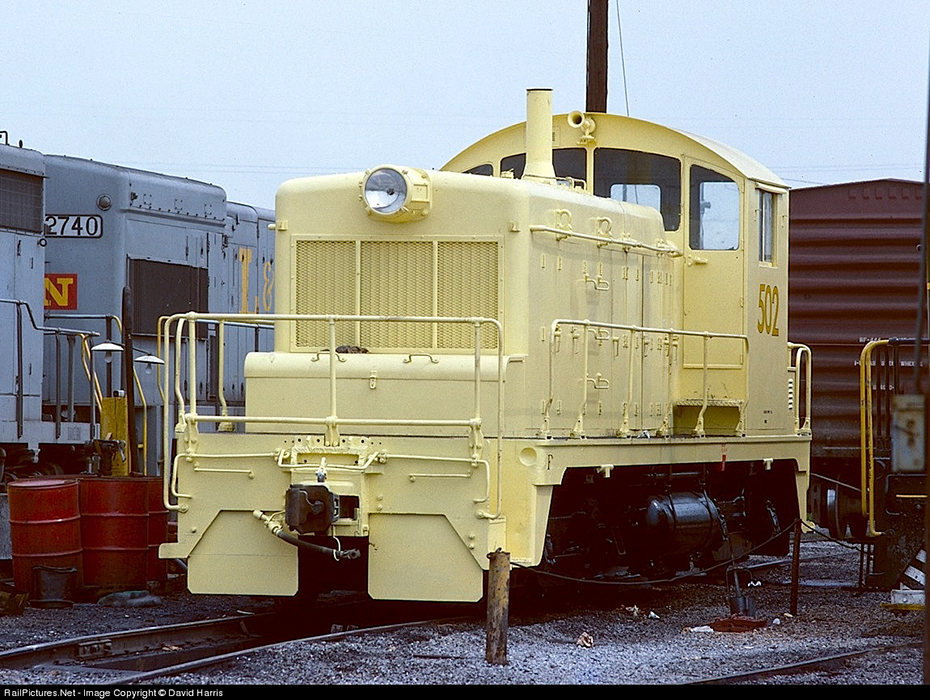
repainted as No. 503 for new owner Kaiser Chemical
No. 12 arrived at Piney River on June 7, 1965, as the third and final VBR diesel unit. She was formerly Erie Lackawanna No. 354 (ex-DL&W 432). For several years No. 12 ran on the VBR in her Erie Lackawanna colors of black with yellow striping. Even the EL “diamond” herald was utilized, with a “V” replacing the painted-out “E”. As noted above, No. 12 was overhauled in 1974 by RSC in exchange for the trade-in of No. 11. By early 1975, No. 12 was back at work on the VBR, and continued to haul what little freight remained on the line.
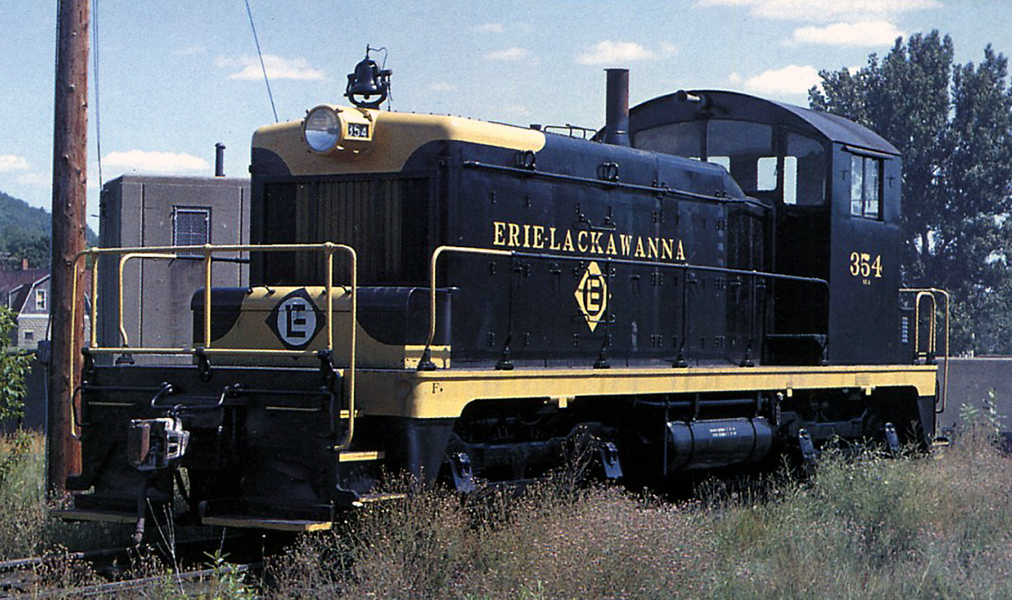
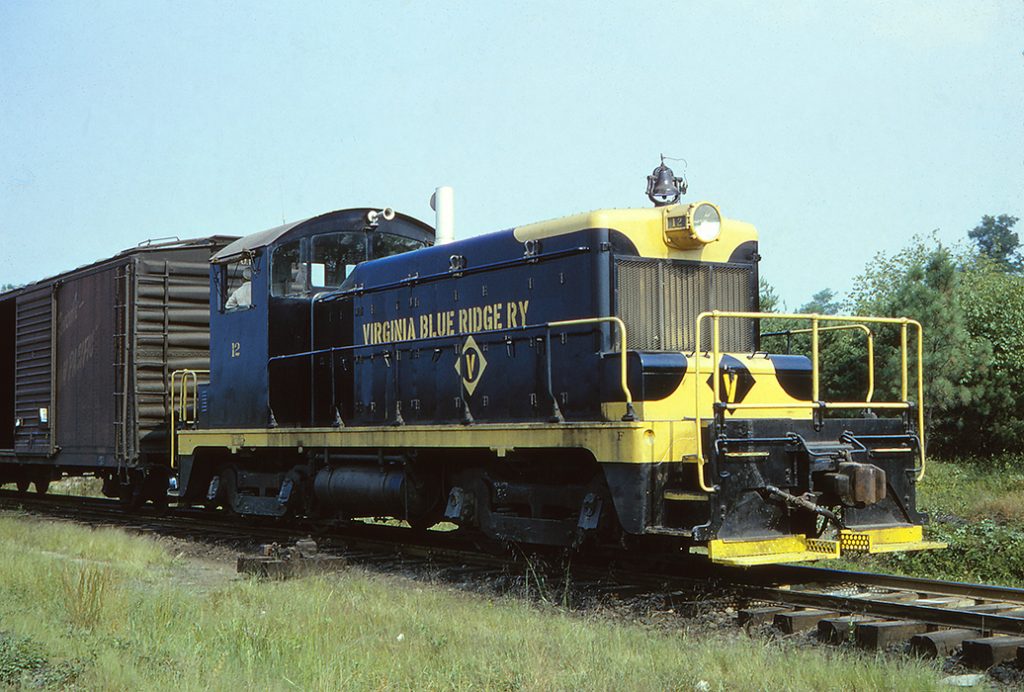
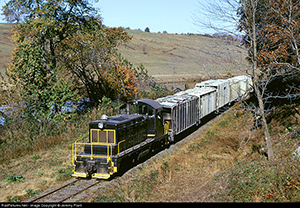

In the early-1970’s the VBR repainted the diesels one last time (green for No. 10 and black for No. 12), but with the railroad’s name no longer proudly painted on the side of the carbody. Instead, the name was stenciled in barely noticeable 2-inch high letters near the top of the forward portion of the hood. Apparently there just was not enough money left to paint the large version of the company name on the engines.
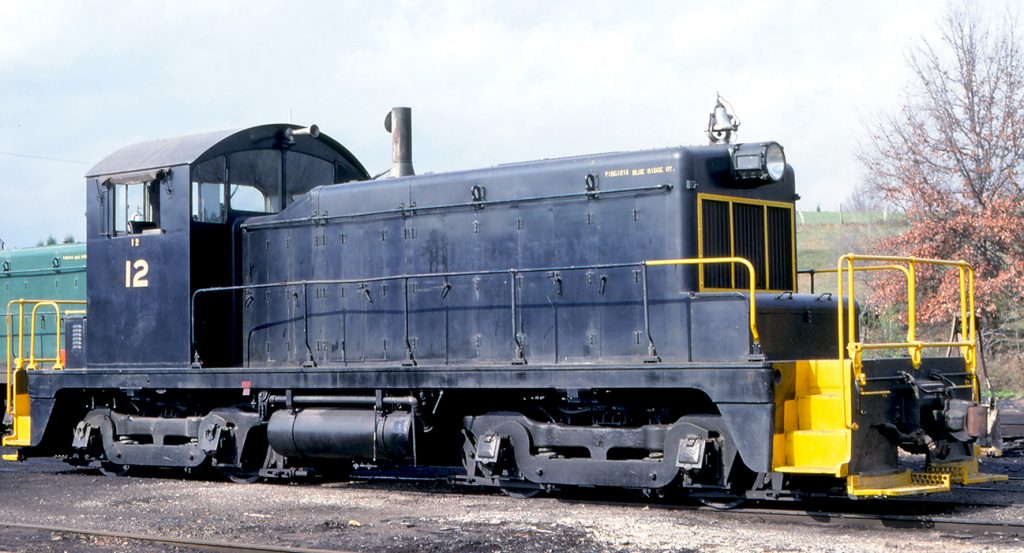
At the end of her VBR career, No. 12 (along with sister unit No. 10) was sold to Union Tank Car Company in 1985, and became “UTLX 12227”. Today, she is still in operation, in very faded blue paint at the UTLX facility in Valdosta, Georgia.
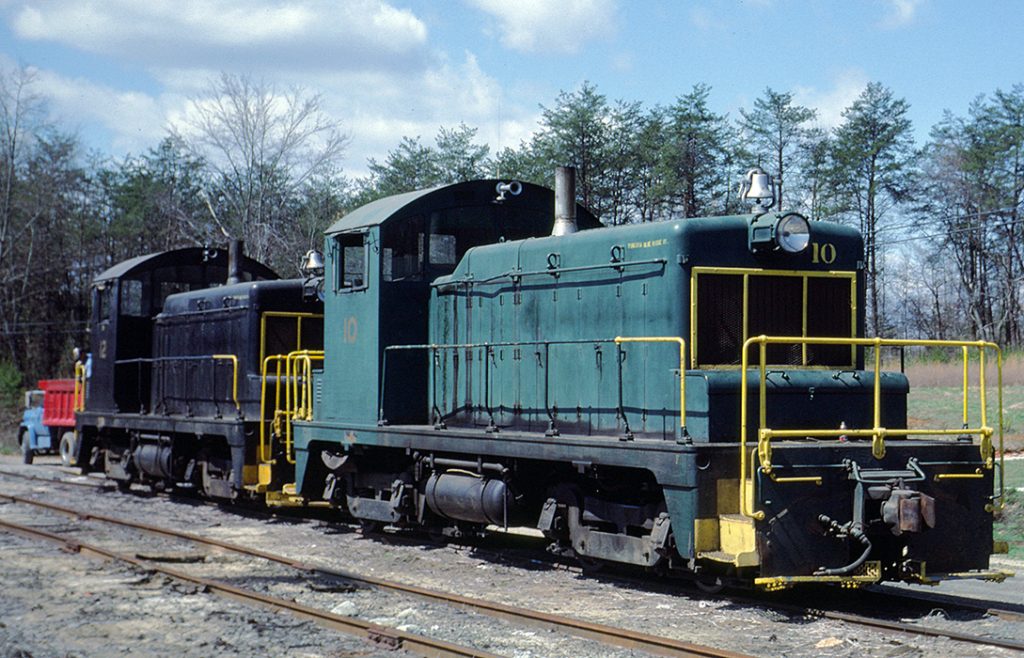
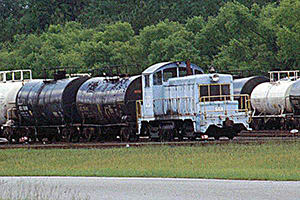
Cabooses – Nos. 2 & 3 The Virginia Blue Ridge Railway, like every other railroad in the country employed a wide variety of equipment over the years to conduct its business, ranging from locomotives, passenger cars, maintenance equipment, and of course, cabooses. The VBR acquired its first caboose in the late-1940’s from the Southern Railway (SR). Just why the VBR assigned the road number “2” to what in all likelihood was actually their first caboose is somewhat of a mystery, as none of the surviving VBR equipment files or photos suggest otherwise.
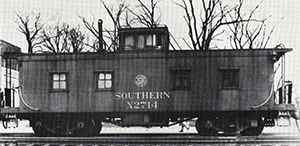
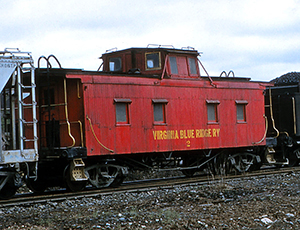
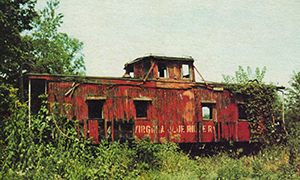
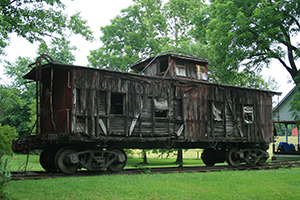
Caboose 2 was a wooden ex-Southern Railway car of 1922 vintage that may have originally carried the road number “X2560”. As the Southern began acquiring its first steel, bay-window cabooses in 1948, the old wood cars began their slow march into retirement. X2560 was sold to the Virginia Blue Ridge about that time where it became Caboose No. 2. For the next decade, it faithfully tagged along behind the VBR’s freight trains as they rolled their way along the Piney River. By the end of 1960, the stress of long years on the road was apparent, forcing the VBR to retire the car from active service. It was parked on an overgrown side track at Piney River where it was eventually overtaken by plant-life. Around 1979, with old No. 2 clearly showing its age, she was purchased by an individual who trucked the by-now, very fragile car to Rapidan, VA where it was set up on a section of panel track alongside the 1887 Rapidan Depot (currently a private residence) where plans were made to eventually restore the car to its former Southern Railway glory. Unfortunately, this never happened and presently, decades after the caboose left Piney River, it continues to decay and crumble in place…Mother Nature slowly reclaiming the lumber and iron for the earth from whence it came.
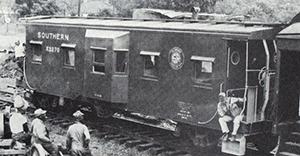
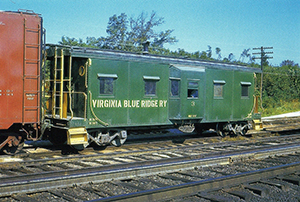
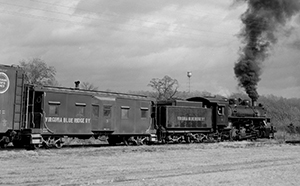
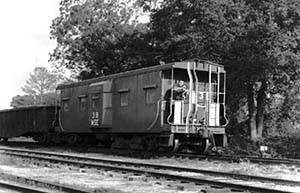
Caboose No. 3 was another former Southern Railway caboose, this one of all-steel construction and of the bay-window configuration. Built between 1948 – 1951 as part of a batch of 131 cabooses ordered by the Southern, the original road number of this car cannot be determined at present, due to the lack of documentation in the VBR equipment files. The original SR road numbers were X3139 – X3270. When the VBR was in need of a new caboose after the retirement of No. 2 in 1960, a replacement car was purchased from the Southern. The VBR’s bay-window caboose was a fairly modern piece of rolling stock of the diesel-era that looked somewhat out of place on the rural, steam-powered VBR with it’s bright green paint, yellow handrails and lettering. For 20 years the steel caboose could be found at the end of the VBR’s freight trains, but when the railroad shut down, the car was purchased by the Mississippi Export Railroad in Moss Point, MS where it was given the road number “38”.